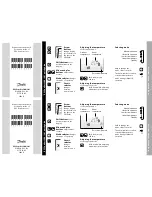
2-8 Router Installation and Configuration Guide
Preparing to Connect to a Network
Synchronous Serial Connections
Before you connect a device to the synchronous serial port (labeled “SERIAL”), you will
need to know the following:
•
The type of device, DTE or DCE, you are connecting to the synchronous serial
interface.
•
The type of connector, male or female, required to connect to the device.
•
The signaling standard required by the device.
DTE or DCE
A device that communicates over a synchronous serial interface is either a DTE or DCE
device. A DCE device provides a clock signal that paces the communications between the
device and the router. A DTE device does not provide a clock signal. DTE devices usually
connect to DCE devices. The documentation that came with the device should indicate
whether it is a DTE or DCE device. (Some devices have a jumper to select either mode.) If
you cannot find the information in the documentation, refer to Table 2-2 to help you select
the proper device type.
Table 2-2
Typical DTE and DCE Devices
1. If pins protrude from the base of the connector, the
connector is male.
2. If the connector has holes to accept pins, the connector is
female.
3. CSU/DSU = Channel service unit/data service unit.
Device Type
Gender
Typical
Devices
DTE
Male
1
Terminal
PC
Router
DCE
Female
2
Modem
CSU/DSU
3
Multiplexer
Summary of Contents for 2501 - Router - EN
Page 4: ...xviii Router Installation and Configuration Guide Conventions ...
Page 14: ...1 10 Router Installation and Configuration Guide Ordering Documentation ...
Page 32: ...2 18 Router Installation and Configuration Guide Where to Go Next ...
Page 78: ...4 24 Router Installation and Configuration Guide Getting More Information ...
Page 84: ...A 6 Router Installation and Configuration Guide Reading the LEDs ...
Page 108: ...C 24 Router Installation and Configuration Guide ISDN BRI Port and Cable Pinouts ...
















































